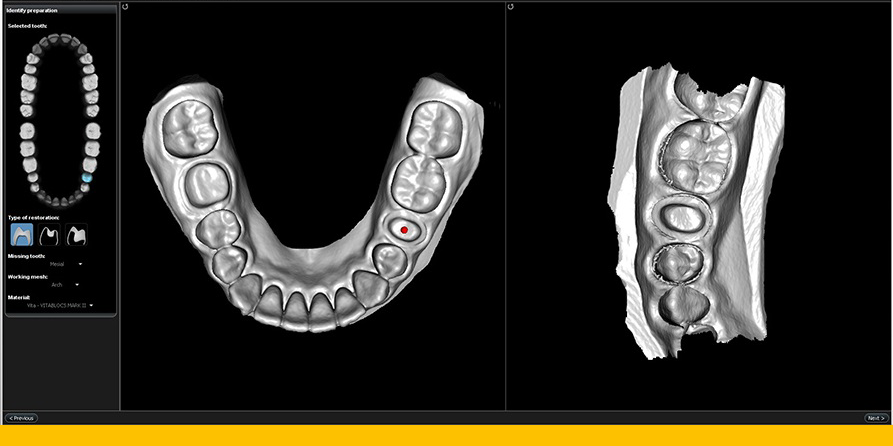Bridging the Gap Between Restorative and Periodontal Dentistry

The longevity of dental restorations plays an important role in public health as it directly affects the need for future dental treatments. Restorative dentistry has drastically changed in the twenty-first century and continues to revolutionize techniques and relevant equipment. Now more than ever, the demand for a ‘pretty smile’ has become a quest across all demographics. As the population ages and life expectancy increases, clinicians today find themselves in the wake of an ever-growing demand for high-quality aesthetic dental treatment. The long-term success of both cosmetic and restorative dentistry is dependent on well-designed restorations and the health of the periodontal tissues. [1] Therefore, a restoration is not solely determined by the quality of work but in a working relationship between both the restorative dentist and periodontist. When concerning the patient’s expectations, diagnosis, and treatment planning, it’s important to develop a plan that incorporates both perspectives.
The Importance of the Perio-Restorative Relationship
The relationship between restorative and periodontal dentistry is dynamic. It requires a working knowledge of both principles for successful integration. For the restoration to esthetically appear healthy, the gingival tissues must frame the restoration in a natural manner. Restoration design directly affects the periodontium in margin placement, margin adaption, restoration contour and occlusal function.[2] Hence, it is important to eliminate periodontal disease prior to restorative treatment due to a few factors:
-
Gingiva is altered after periodontal treatment.
-
Teeth positioning is continuously altered with periodontal disease.
-
Impressions may be more difficult to obtain with inflamed gingiva.
-
Tooth discomfort inhibits mastication and function.
-
Inflammation of the periodontium restricts the capacity of abutment teeth 2
Engaging Patients in Treatment
In most cases, patients tend to be unaware of their periodontal status and how they can limit their restorations. The lack of patient awareness enforces how critical it is for periodontists to detail their assessment and state how the form of the periodontium will be affected. It is not uncommon for patients to approach periodontal appointments with little to no understanding of why they’ve been referred. The process can become overwhelming or confusing when patients feel disengaged with their own treatment. For this reason, communication between clinician and patient should be as seamless and detailed as possible. Incorporating models, 3-d imaging and videos into the esthetic analysis make it easier to engage patients with their diagnosis and treatment plan. These visuals provide a basis of communication when discussing the patient’s expectations and any applicable limitations. Gaining the patient’s confidence throughout the restorative process places value on their involvement and ensures they are aware of the end goal.
Treatment Considerations: Restorative Margin Placement
Restorations should be critically placed to ensure they are in perfect harmony with the periodontal tissue. To ensure a long-lasting restoration and optimum gingival health, there must be proper margin location of the restoration relative to the alveolar bone. When determining where to place restorative margins relative to the periodontium, it is recommended that the patient’s existing sulcus depth be used as a guideline in assessing the biologic width requirement for the patient. The extension of any restorative margin into the gingival sulcus should be considered a compromise, but esthetic or retention demands often make it necessary. Hence, supragingival margins are preferred over subgingival margins as they are considered a compromise. The marginal fit should be optimal because rough restorations or open margins lead to an accumulation of plaque and bacterial pathogens that are associated with inflammatory periodontal disease.[3] Obtaining a smooth, natural look for dental restorations while providing a seal against bacterial invasion is vital.
Overall, it is essential to incorporate both periodontal and restorative measures for optimizing the best outcome. Maintenance and preservation are the main objectives for restorations. The placement of restorations is critical for maintaining harmony with the surrounding periodontal tissue. With accurate periodontal diagnosis and comprehensive treatment, optimal results and patient satisfaction can be achieved.
[1] Reeves J. Periodontal health—challenges in restorative dentistry. National Center for Biotechnology Information. 2014;3(2):73-6.
[2] Sood S, Gupta S. Periodontal-restorative interactions: a review. Indian Journal of Clinical Practice. 2013;23(11):707.
[3] Mansi AR, Deshpande N. Perio-resto interrelationship – a literature review. IOSR Journal of Dental and Medical Sciences. 2015;14(12):38-41.






